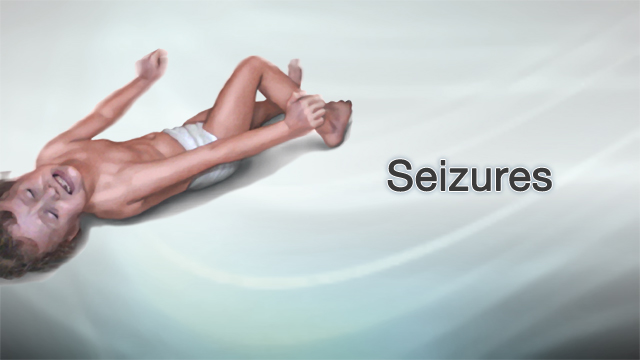


Have you ever wondered why some children experience seizures when they have a fever? It can be a worrisome and bewildering experience for parents and caregivers. Febrile seizures are a type of seizure that occurs in young children as a result of a fever. While they can be alarming to witness, it is important to note that the vast majority of febrile seizures are brief and harmless. Most children who experience these seizures will recover swiftly and will not suffer any long-term consequences or complications.
It is estimated that between 2.5% and 5% of children who have complex febrile seizures may go on to develop epilepsy. While this percentage is relatively small, it underscores the importance of understanding febrile seizures and how to manage them effectively. By gaining knowledge and being prepared, parents and caregivers can navigate these situations with confidence and provide the necessary support to their children.
In this blog, we will explore pediatric febrile seizures, shedding light on their causes, symptoms, and treatment options. We will also delve into the distinction between simple and complex febrile seizures and discuss the potential long-term implications for a small subset of children. Our aim is to equip you with the information and tools you need to recognize, respond to, and seek appropriate medical attention for febrile seizures.
A febrile seizure is a type of seizure that commonly occurs in young children, typically between the ages of six months and five years, when their body temperature rapidly rises due to a fever. These seizures can be concerning for parents and caregivers, as they often present as sudden shaking or convulsions. However, it is essential to understand that febrile seizures are typically brief and pose little to no long-term harm.
Febrile seizures are more commonly seen in young children, with approximately one in 25 experiencing at least one seizure. The highest risk occurs around age 2, and children aged 6 months to 5 years are particularly susceptible. Around 40 per cent of children who have one febrile seizure may have another, with certain factors increasing the likelihood. These include being younger than 18 months at the time of the first seizure, having a family history of febrile seizures, experiencing the seizure before other illness symptoms appear, and having a low body temperature during the initial seizure. Recognizing these risk factors can help parents better understand the potential for recurrent febrile seizures and seek appropriate medical attention when necessary.
Febrile seizures are classified into two main types: simple and complex. Simple febrile seizures are the most prevalent, accounting for approximately 85% of cases. They usually last for a short duration, generally less than five minutes, occur only once within a 24-hour period, and do not exhibit any additional neurological symptoms apart from the seizure itself. On the other hand, complex febrile seizures are less common, making up around 15% of cases. These seizures tend to be longer, exceeding 15 minutes, may occur multiple times within 24 hours, and may involve focal neurological signs or symptoms.
The precise cause of febrile seizures is not yet fully comprehended. However, it is widely believed that these seizures are induced by the sudden elevation of body temperature during a fever. Rather than the specific underlying cause of the fever itself, it is the fever and its rapid increase that are considered to be the primary factors contributing to the occurrence of febrile seizures.
Fevers can arise from various factors, including viral or bacterial infections, vaccinations, and inflammatory conditions. It is important to note that febrile seizures are not directly caused by a particular illness or infection but rather by the presence of a fever accompanying these conditions.
Diagnosing febrile seizures involves a careful evaluation by healthcare providers. They will ask about the child’s medical history and give them a physical examination. They may also do some tests on their blood and urine to find out why they have a fever. It’s important to tell the difference between febrile seizures and seizures caused by more serious problems like meningitis, which needs urgent medical attention. If meningitis is suspected, they may take a small sample of the fluid around the brain and spine to test it. If the seizure lasts a long time, or they are under 6 months old, they may need to stay in the hospital.
Febrile seizure treatment in paediatrics typically involves managing the fever itself rather than the seizure. Fever-reducing medications may be given, although they do not necessarily prevent febrile seizures. For children with complex febrile seizures that tend to be prolonged, medications may be prescribed for use at home, particularly if the seizure lasts longer than five minutes or if the child experiences multiple seizures within 24 hours. However daily prescription antiseizure medications are rarely used to prevent febrile seizures unless there are specific risk factors present.
What should I do if my child experiences a Febrile seizure?
Recognizing the signs and symptoms of febrile seizures, understanding the risk factors, and knowing how to respond during a seizure is important. Consulting a pediatric neurologist in Nashik or elsewhere, especially for complex febrile seizures or if additional symptoms are present, is important to ensure appropriate evaluation and management. By staying informed and prepared, you can help your child recover with ease.